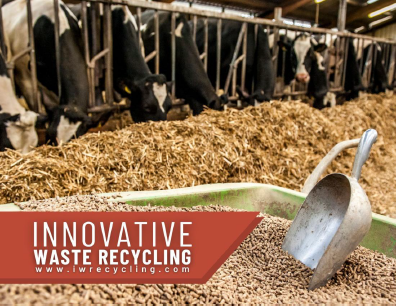Food Waste: Challenges & Opportunities with Waste-to-Animal Feed
![]() Print this Article | Send to Colleague
Print this Article | Send to Colleague

The journey toward responsible food waste management requires careful consideration of the
types of waste that can be safely repurposed, the nutritional standards necessary for animal
health, and the logistical challenges associated with this practice. By fostering a better
understanding of these elements, food producers and processors can continue to contribute to
developing a sustainable and efficient waste management framework that benefits both their
operations and the broader ecosystem. Let us explore the challenges and opportunities in
harnessing food waste as a valuable resource for animal feed.
Not All Food Waste is Fit for Animal Consumption:
To better understand waste-to-feed, it is essential to acknowledge that certain types of food waste
can be harmful or toxic to animals if consumed. For example, Dairy cows should avoid cherries
because the pits or leaves can contain cyanide. This necessitates exploring alternative waste
management methods such as composting or anaerobic digestion.
Furthermore, Farmers are tasked with ensuring that their livestock meet specific nutritional
requirements, making them selective about their animal feed. In some cases, farmers may opt for
traditional feed pellets or produce their own feed to guarantee the health and well-being of their
animals. Innovative Waste Recycling requires a nutritional analysis of waste material before it
can be used for animal feed and to ensure it is acceptable for livestock.
Contamination Concerns:
Waste collected at large production facilities may also contain contaminants by foreign materials
such as plastics, metals, or glass, often due to equipment malfunctions or insufficient employee
training. Additionally, prolonged storage of food waste can also lead to the proliferation of
harmful bacteria, exemplified by a recent incident in which a farmer nearly lost his entire herd
due to salmonella contamination. The potential for harmful contamination makes some farmers
hesitant to accept waste or byproduct material as feed for their livestock.
Challenges of Logistics:
Attracting farmers willing to accept waste materials necessitates geographical proximity to
production facilities; otherwise, the costs associated with transportation can create logistical
hurdles. Livestock farmers require a consistent supply, uniform composition of food waste, and
assurance of zero contamination to utilize food waste streams effectively.
Despite the challenges, numerous farmers have successfully incorporated food waste into their
feeding regimens. The nutritional benefits of such byproducts can be significant in specific cases.
For example, fish waste, which includes bones, heads, and flesh, is rich in protein, minerals, and
vitamins. The market for further processed fishery byproducts has emerged, providing animal
feed or ingredients for pet foods.
In conclusion, it is essential to understand that converting food waste to feed represents only one
facet of a broader waste management strategy. By integrating complementary approaches such as
composting, anaerobic digestion, and incineration, businesses can devise a more cost-effective,
sustainable, and holistic method for waste reduction.
David Russick is the CSO for Innovative Waste Recycling. David can be reached at david@iwrecycling.com. Additional case studies regarding IWR’s food waste management can be found on their website at https://www.iwrecycling.com/resources/case-studies/



